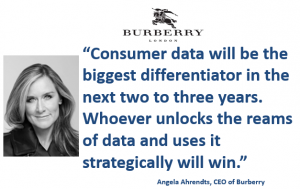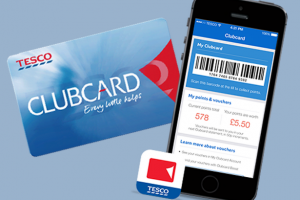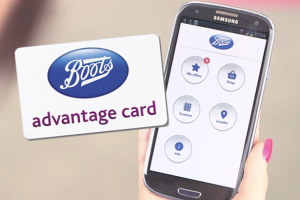Feb
2015
What makes a successful Loyalty Scheme for the Retailer? Let’s find out!
Millions of us have at least one, or typically, a purse/wallet full to the brim of loyalty cards from a variety of Retailers. To be precise, a report from YouGov reveals that a whopping, three-quarters (76%) of British consumers say they carry between 1-5 cards with them at all times.
Economic hardship has encouraged an increasing number of consumers to hunt for bargains as household budgets have tightened. The question is how to retain your customer base and do it right?
This blog will give a guide on what makes a successful loyalty scheme for the Retailer. It will look at certain Retail success stories that have encouraged consumers to stay loyal, as these customers are also its most profitable (O’Brien & Jones, 1995). So it’s no surprise that more companies not fewer, are jumping on the bandwagon, spending millions of pounds developing and implementing reward programs.
The development of long-term relationships plays an essential role in enhancing customer loyalty and profitability (Kalwani & Narayandas, 2011)), therefore creation and maintenance to support this needs to be customised.
The customer loyalty scheme is one example of the continual blurring of the boundaries between direct marketing and ‘mainstream’ marketing, relying as it does upon a customer database and direct communications (O’Malley, 1998).
The question is, what makes a successful loyalty scheme for the Retailer?
- Applied analysis of consumer data to predict future purchase. Targeted campaign activity based on communication preferences can be tested to check the accuracy of the prediction model. Fundamentally, continual testing to determine the learning from each campaign can be applied to the next. However practitioners often think data collected is too complex to grasp and should be simplified.
- Appropriate & sufficient business architecture, in order to understand which data elements indicates current and historical loyalty behaviour (either in store or across multiple channels).
- The customer service centre. A sophisticated customer loyalty scheme involves several different parties, so must be organised efficiently and appropriately.
- Database & analysis is critical to the schemes success. It must be able to handle large amounts of data quickly, reliably and efficiently with data quality being maintained in order to avoid a high volume of customer queries.
(Stone et al, 2004)
However, Retailers also need to take into consideration how Facebook has 800 million unique monthly visitors worldwide to make this social network one of the most visited sites on the Web. It has become quite common for customers to air grievances about brands on Facebook, which can impact the perceptions of people in their closed network. So, if a brand values it’s customer loyalty, listening and acting at the right moment is crucial. When a company responds to a complaint or negative review, 18% of unsatisfied customers become loyal customers and buy more (Gamboa & Goncalves, 2014)
Success Schemes
Tesco Clubcard – most popular loyalty card in the UK. Over 68% of the British population own one. This scheme excels because they know so much about your shopping habits. With this wealth of data, Tesco can tailor your coupons, as well as allowing you to redeem points against a huge variety of products (holidays/groceries).

My John Lewis/Waitrose – just for creating an account with John Lewis you are rewarded with free coffee and cake every month, without spending a penny! You also gain insider tips, news, product previews, invitations to local events and exclusive offers on products to match your shopping habits! According to Mark Price, Managing Director of Waitrose, “loyalty cards are meaningless – consumers want immediate rewards”.
Boots Advantage – UK’s third most popular loyalty card. For every £1 that you spend you earn 4 points – equivalent to 4p (this can really add up!) You also get access to coupons and discounts as well as free Boots magazine every month with further coupons.

Failed Schemes
Air Miles – The globally successful Air Miles program failed when it was launched in the US market, mainly due to the complexity of redeeming benefits. The program lost $25million in its first year and subsequently shut down.
Ikea Family – rewards customers only with discounts on select products and throw-ins (free coffee). There is no points system and no accumulation based on spend, with no reward.
Common mistakes to avoid:
- Not treating high value customers differently
- Pretending to treat high value customers differently
- Offering too narrow a rewards earning period
- Being stingy with payout
If you are interested in finding out more on mistakes to avoid then check out the Whitepaper Forte Consultancy did here – http://bit.ly/1znwW4A it gives a really detailed insight into loyalty schemes gone wrong!
References
Gamboa, A. & Goncalves, H. (2014). Customer loyalty through social networks: Lessons from Zara on Facebook. Business Horizons, Vol 57, Iss 6, pp709-717
Kalwani, M., & Narayandas, N. (2011). Long-term manufacturer- supplier relationships: Do they pay off for supplier firms? Journal of Marketing, 59(1), 1—16.
O’Brien, L., & Jones, C. (1995). Do rewards really create loyalty? Long range planning, 28(4), 130-130
O’Malley, L. (1998) Can loyalty schemes really build loyalty? Marketing Intelligence & Planning, Vol. 16 Iss: 1, pp.47 – 55
Stone, M., Bearman, D., Butscher, S. A., Gilbert, D., Crick, P., & Moffett, T., (2004). The effect of retail customer loyalty schemes—Detailed measurement or transforming marketing? Journal of Targeting, Measurement and Analysis for Marketing, 12(3), 305-318
YouGov (2013). British shoppers in love with loyalty cards. [Online]. [Accessed 18th February 2015]. Available from: https://yougov.co.uk/news/2013/11/07/british-shoppers-love-loyalty-cards/

